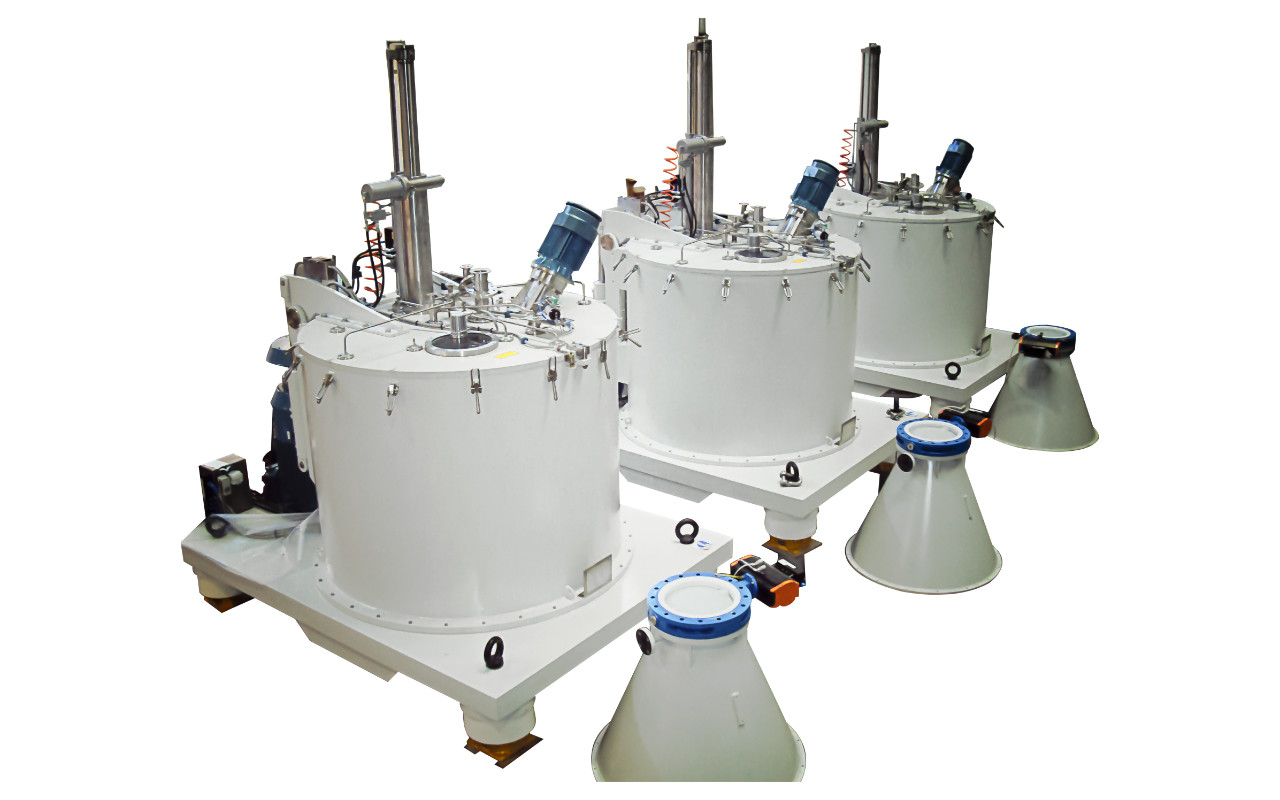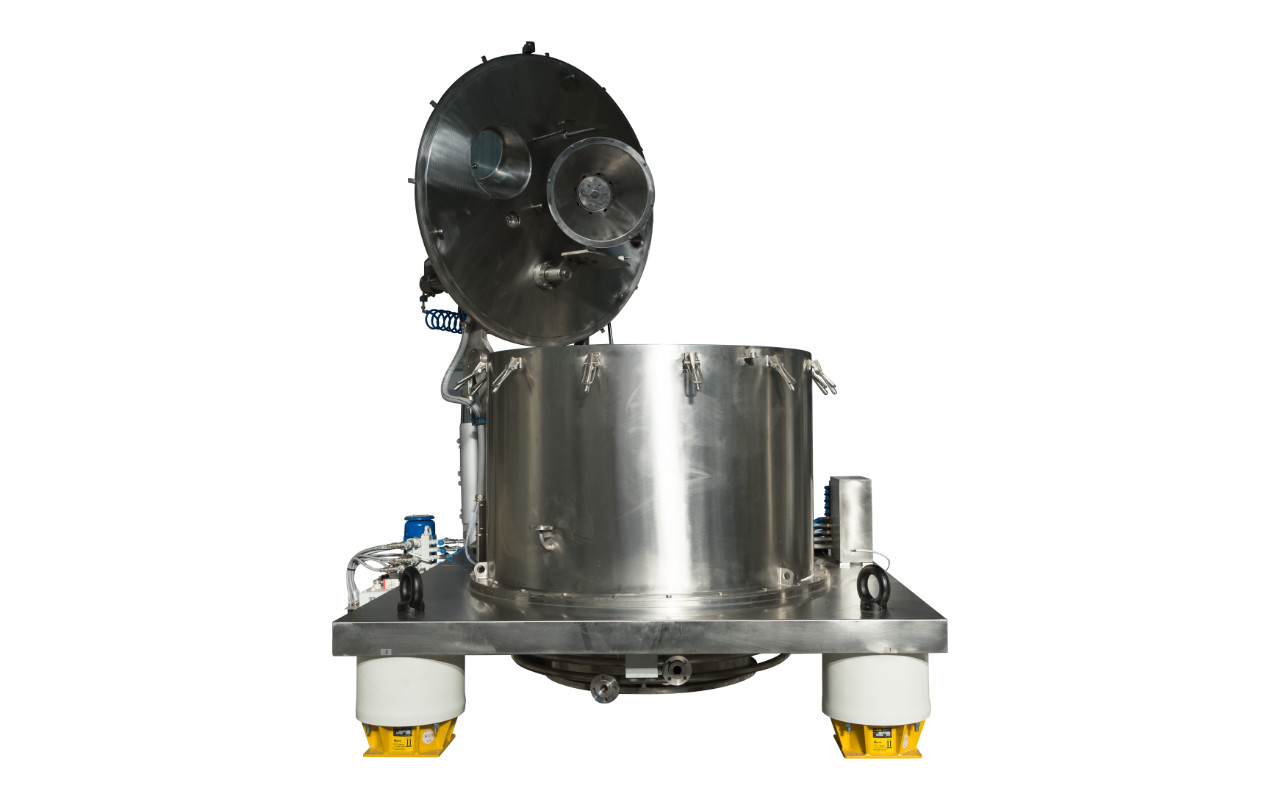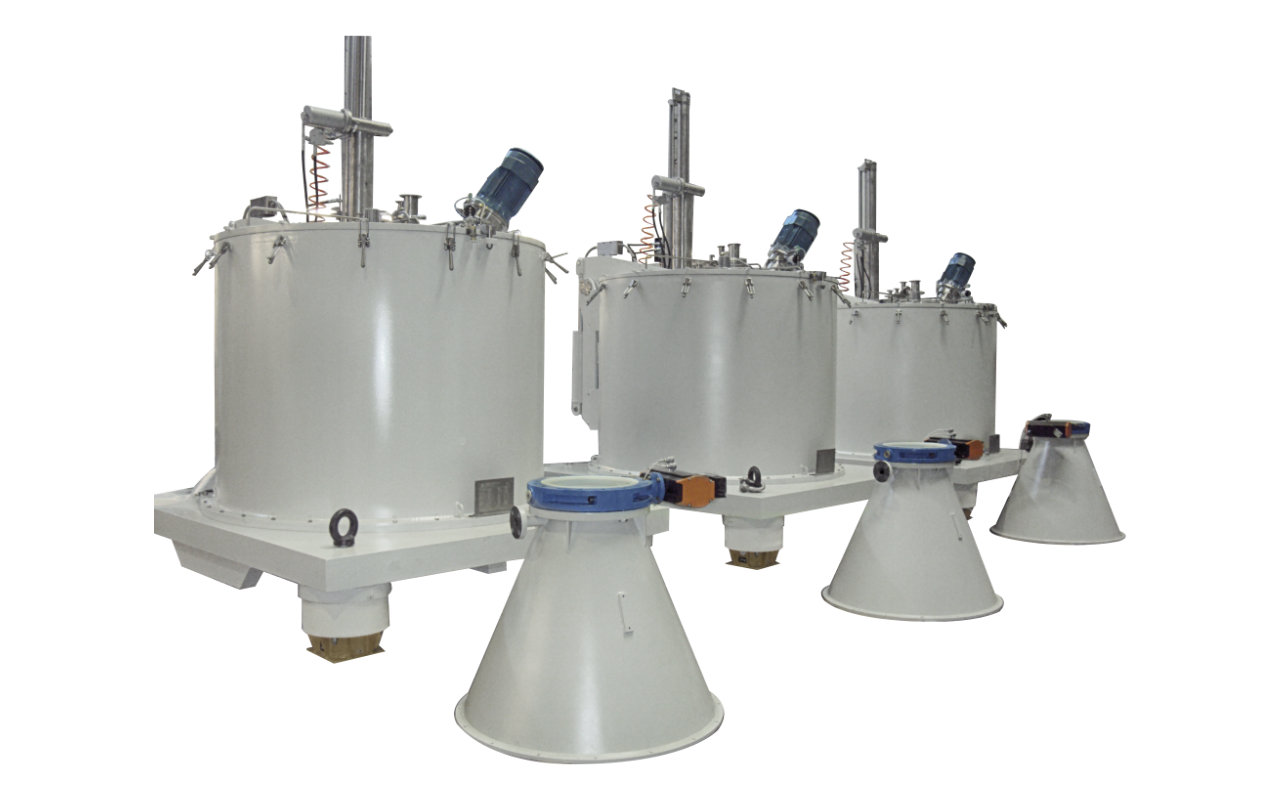Specification
- Suitable for chemical products
- Suitable for products requiring a wide filtering surface
- Suitable for products to be processed in a closed environment
- Complete cycle (from loading to discharging) carried out without contact between the operator and the product
- Operations via PLC or DCS (manual, semiautomatic or fully automatic modes);
- Normally used for mono-productions
- Relatively small foot print
- Inertia base installation with visco dampers
- Easy filter cloth fixation by means of extension rings
- Feeding via static feed pipe or via rotating disc, suitable for fast filtering product as it avoids vibrations granting an even cake distribution
- Materials in contact with the product: all stainless steels and special alloys available, such as AISI 316L, AISI 904L, Hastelloy, Monel, ALLOY 59, 254 SMO, NICKEL, TITANIUM, SAF 2205. HALAR coatings (ECTFE), also antistatic and FDA certificated, Teflon ETFE, HARD RUBBE
Technical Data
| Centrifuge Model: TM | Basket diameter | Basket length | Filtering surface | Cake volume | Max load | Max speed | G factor | Centrifuge weight |
|---|---|---|---|---|---|---|---|---|
| Unit | mm | mm | m² | dm³ | kg | RPM | xg | kg |
| 800/250 | 800 | 250 | 0,63 | 63 | 79 | 1650 | 1216 | 1500 |
| 800/400 | 800 | 400 | 1,01 | 100 | 125 | 1500 | 1006 | 2000 |
| 1000/500 | 1000 | 500 | 1,57 | 200 | 250 | 1200 | 805 | 4100 |
| 1000/630 | 1000 | 630 | 1,98 | 250 | 312 | 1200 | 805 | 4250 |
| 1250/700 | 1250 | 700 | 2,75 | 400 | 500 | 1000 | 700 | 6400 |
| 1250/800 | 1250 | 800 | 3,14 | 500 | 625 | 1000 | 700 | 6700 |
| 1600/800 | 1600 | 800 | 4,02 | 820 | 1025 | 900 | 724 | 12000 |
| 1600/1000 | 1600 | 1000 | 5,03 | 1025 | 1280 | 900 | 724 | 13000 |
| 1700/1190 | 1700 | 1190 | 6,3 | 1377 | 1721 | 850 | 686 | 14500 |
| 1850/1250 | 1850 | 1250 | 7,26 | 1710 | 2140 | 800 | 643 | 16500 |
Functioning
Production
Feeding
The suspension is fed from the feeding pipe (or optionally via a rotating feed cone) into the centrifuge and under the influence of centrifugal force, it moves towards the filter cloth, placed on a perforated basket. The solid part of the suspension is retained by the filter cloth forming a cake, while the liquid filters through the cake, the filter cloth and through the holes of the basket. The growth of the cake thickness is controlled by a mechanical paddle detector, which can automatically stop the loading phase when the desired cake thickness is reached.
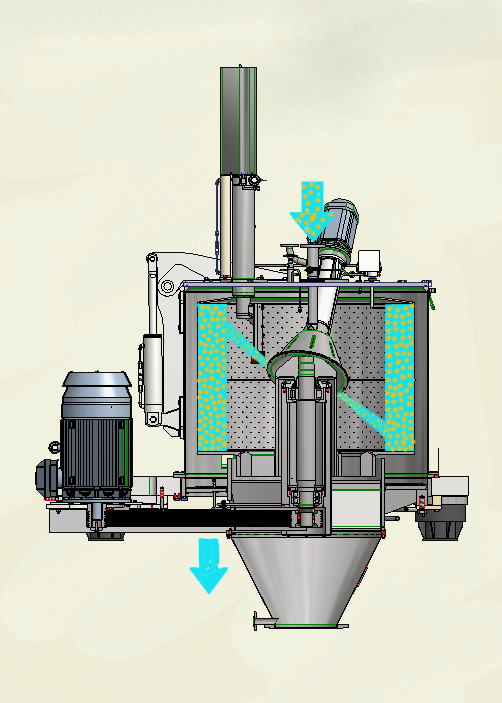
Cake washing
The washing of the product is used to remove any impurities present in the cake. The washing liquid is distributed on the product, along the entire length of the basket, through nozzles suitably distributed on the washing pipe (or optionally via a rotating feed cone). The liquid passes through the product, then passes from the filter cloth and the holes of the basket, removing any eventual impurity present in the cake.
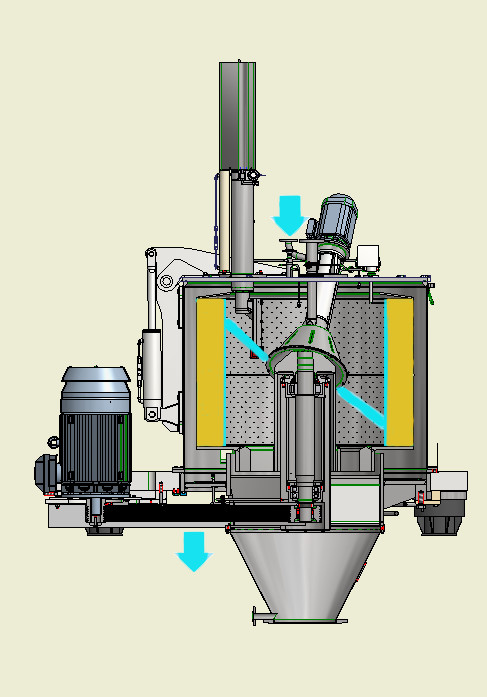
Centrifugation
Once completed the washing phase, the centrifuge is accelerated to the maximum speed allowable for the product being processed and maintained for a given time to achieve the required level of residual moisture of the product. At the end of the centrifugation, the centrifuge decelerates to the discharge speed.
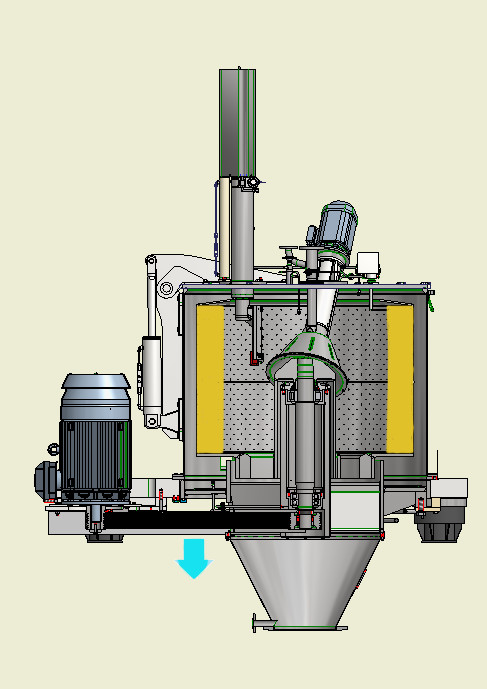
Discharge
The discharge takes place by means of the scraping knife. After reaching the discharge speed, the knife increment command is activated and the knife starts cutting the cake conveying the product into the discharge chute and from it to the product collection systems (drums, bin, dryers and mixers).
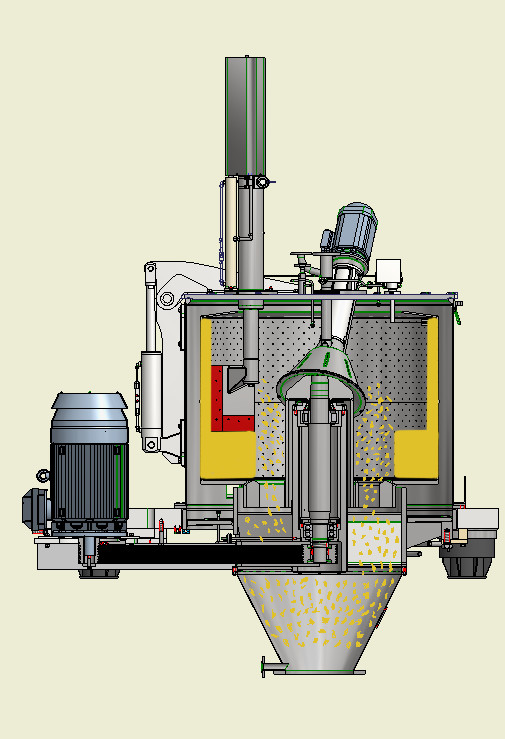
Heel cake removal
At the end of the product discharge phase, a heel product cake remains on the filter cloth. This heel cake can be removed, to improve the filterability of the product, through the high-pressure nitrogen blow from the rear part of the basket or/and via nozzles placed on the knife. The product is collected by the knife, positioned close to the filter cloth, and conveyed through the chute into the collection systems.
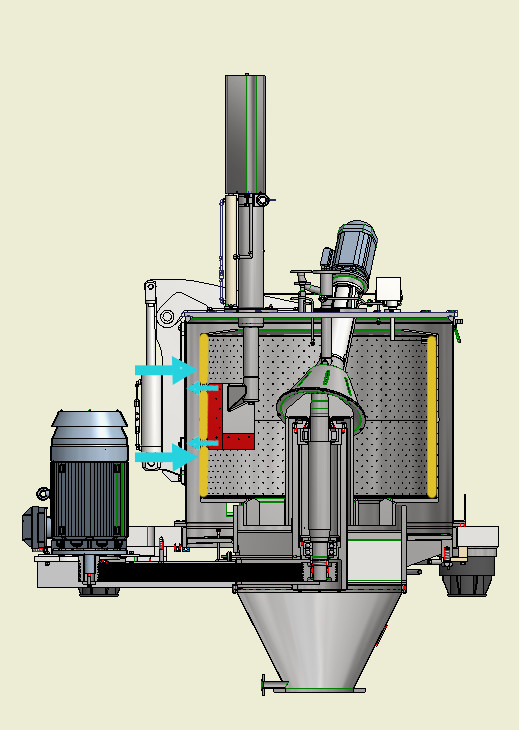
C.I.P.
The centrifuge should be cleaned at every change of product to avoid "cross-contamination" between the processed products. The centrifuge cleaning system, fully automated, is composed by 2 main stages: cleaning with spray balls and Washing Machine Effect (optional), which can be alternated to achieve maximum cleaning and to optimize the consumption of the cleaning liquid.
Cleaning with spray balls
The washing liquid is sprayed through spray balls on all the surfaces of the process area to completely remove the residues of product still present. The spray balls are appropriately distributed to reach every surface in contact with the product (process area).
Washing Machine Effect (WME) (optional)
The centrifuge is filled with the washing liquid up to a predetermined height and is put in rotation. During the sequence of the automatic washing the basket rotates clockwise and counterclockwise; the knife goes in and out so that the washing liquid reaches all the points of the process area, including the discharge chute.

 Italiano (it-IT)
Italiano (it-IT)  Español (España)
Español (España)  Deutsch (Deutschland)
Deutsch (Deutschland)  Français (France)
Français (France) 